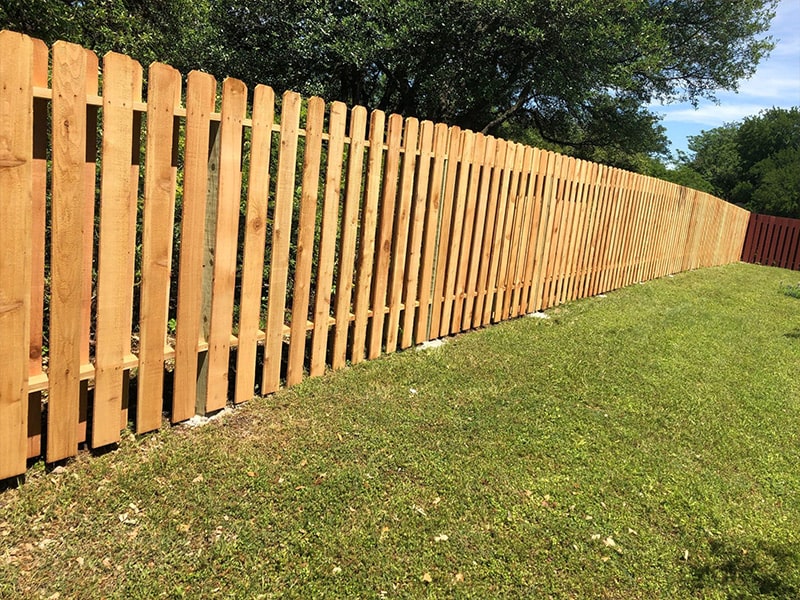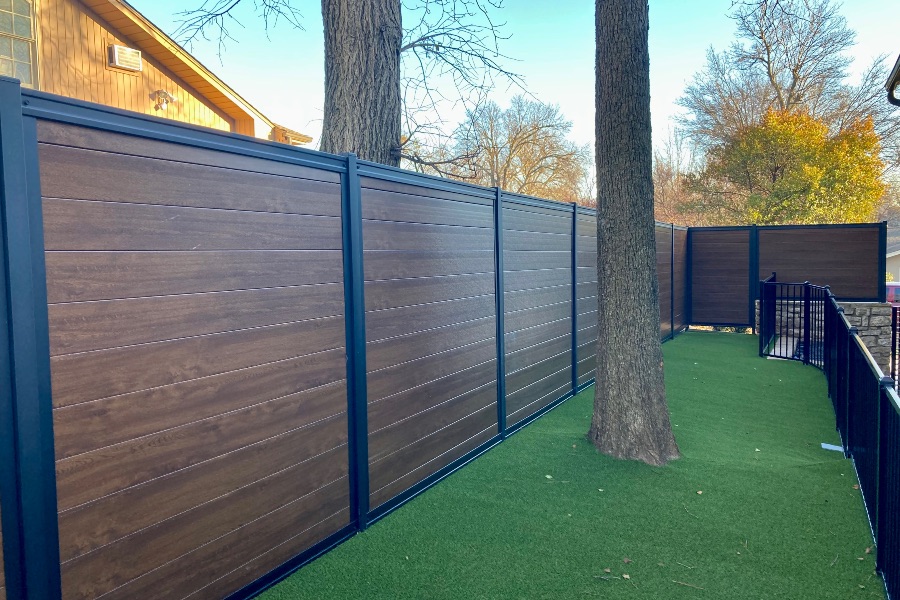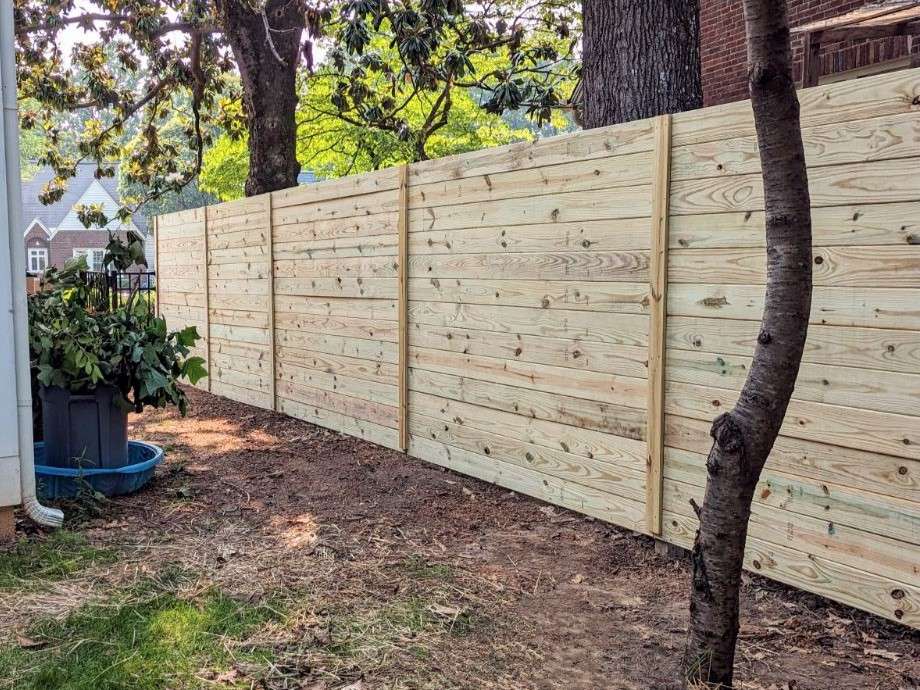Featured
Your fence is exposed to different climate condition year-round, and while it functions as a vital part of your home, it's additionally one of one of the most prone components when it involves weather-related damage. Severe winds, heavy rainfall, extreme temperatures, and UV direct exposure can all take a toll on your fence's honesty, causing deterioration. Fortunately, there are a few steps you can require to shield your fencing and lengthen its lifespan. Here are some efficient techniques to guard your fence from weather-related damage.
Wood Fencings: While timber is a traditional selection for secure fencing, it is vulnerable to insect, rot, and warping damages, particularly in locations with high wetness. Pressure-treated timber or cedar is much more long lasting, however routine upkeep is necessary to maintain it in good condition. Vinyl Fence: Plastic is an exceptional option for those trying to find a weather-resistant and low-maintenance fencing. It's unsusceptible dampness, will not warp or fracture in the heat, and stands up to fading from UV rays. Metal Fence: Wrought iron and aluminum are resilient materials for secure fencing, however they require a rust-resistant coating to safeguard them from corrosion due to moisture. A safety finishing or regular upkeep can protect against corrosion and expand the life of metal fencings. Composite Fence: Made from a mix of timber fibers and plastic, composite fencings are highly resistant to weather aspects, including dampness, heat, and UV rays. This product uses an equilibrium of longevity and aesthetic appeal. Selecting a product matched to your environment will certainly provide much better protection for your fence the long-term.
Seal or Tarnish the Timber: Applying a high-grade sealant or tarnish to your timber fence develops a water resistant obstacle that prevents moisture from entering the timber. It additionally helps shield the wood from UV rays, which can cause discoloration and drying. Reapply Sealer On a regular basis: With time, the safety obstacle of your sealer or tarnish can use down. Depending on your environment, it's a good concept to reapply each to 2 years to maintain the wood secured. This therapy will certainly maintain the fence's appearance, avoid rot, and extend its life-span.
![]()
For additional security, consider making use of wind-resistant mesh displays or panels in areas where wind is a significant issue. This extra layer can assist minimize the pressure that the wind exerts on your fencing.
Check Water Drainage: Make sure that the ground around your fencing inclines far from the messages. Proper drain allows water to stream far from the fencing, avoiding moisture build-up. Set Up Water Drainage Equipments: In locations where drainage is an issue, consider including a French drain or crushed rock around the base of your fence blog posts to reroute water away from the framework. Excellent drain can stop rot, rust, and other forms of weather-related damage.
![]()
![]()
Concrete Grounds: Establish fence blog posts in concrete to avoid them from loosening gradually as a result of dirt disintegration or shifting ground. Metal Dental Braces: Including steel braces to fence articles can give extra toughness and reduce the risk of leaning or breaking. Reinforcing your posts guarantees that your fencing will certainly stay in place, even throughout serious weather condition.
For wooden fencings, delicately clean the surface area with a light detergent to remove dirt and gunk. For plastic fencings, make use of a soft towel and cleaning remedy to avoid accumulation. For steel fences, evaluate for corrosion and sand it off before using a fresh coat of paint. Final thought. Your fencing is a crucial feature of your residential or commercial property, and with the appropriate care, it can endure the challenges presented by the climate. By picking resilient materials, executing routine maintenance, and reinforcing powerlessness, you can shield your fence from the aspects and prolong its life. Normal assessments, using safety coatings, and taking actions to regulate dampness and wind direct exposure will help make sure that your fencing continues to be solid, functional, and eye-catching for several years to come.
- Select Weather-Resistant Materials. The materials you select for your fencing can have a significant effect on its ability to endure the elements. Various materials are much better geared up to take care of specific weather condition conditions. Below's a malfunction of how numerous products stand up against the weather:
Wood Fencings: While timber is a traditional selection for secure fencing, it is vulnerable to insect, rot, and warping damages, particularly in locations with high wetness. Pressure-treated timber or cedar is much more long lasting, however routine upkeep is necessary to maintain it in good condition. Vinyl Fence: Plastic is an exceptional option for those trying to find a weather-resistant and low-maintenance fencing. It's unsusceptible dampness, will not warp or fracture in the heat, and stands up to fading from UV rays. Metal Fence: Wrought iron and aluminum are resilient materials for secure fencing, however they require a rust-resistant coating to safeguard them from corrosion due to moisture. A safety finishing or regular upkeep can protect against corrosion and expand the life of metal fencings. Composite Fence: Made from a mix of timber fibers and plastic, composite fencings are highly resistant to weather aspects, including dampness, heat, and UV rays. This product uses an equilibrium of longevity and aesthetic appeal. Selecting a product matched to your environment will certainly provide much better protection for your fence the long-term.
- Routinely Treat Wood Fencings. Securing it from wetness, sunshine, and temperature level variations is essential if you have a wooden fencing. Wood can soak up dampness from snow, rain, or humidity, causing it to rot and deteriorate. Below's exactly how you can safeguard wooden fencings:
Seal or Tarnish the Timber: Applying a high-grade sealant or tarnish to your timber fence develops a water resistant obstacle that prevents moisture from entering the timber. It additionally helps shield the wood from UV rays, which can cause discoloration and drying. Reapply Sealer On a regular basis: With time, the safety obstacle of your sealer or tarnish can use down. Depending on your environment, it's a good concept to reapply each to 2 years to maintain the wood secured. This therapy will certainly maintain the fence's appearance, avoid rot, and extend its life-span.

- Set up Windbreaks. Solid winds can cause significant damage to fences, specifically those constructed from high frameworks or lightweight products. Wind can topple a fencing or cause panels to move. Mounting a windbreak is a reliable means to lower the influence of gusty winds. You can create a windbreak by planting bushes, trees, or tall plants near your fence. These natural obstacles can assist disperse wind, protecting against straight gusts from harming your fencing.
For additional security, consider making use of wind-resistant mesh displays or panels in areas where wind is a significant issue. This extra layer can assist minimize the pressure that the wind exerts on your fencing.
- Guarantee Proper Drainage Around Your Fencing. Standing water is one of the leading sources of fencing damages, specifically for wood fencings. Water can weaken the fence blog posts, causing them to rot and weaken a lot more quickly. To avoid this:
Check Water Drainage: Make sure that the ground around your fencing inclines far from the messages. Proper drain allows water to stream far from the fencing, avoiding moisture build-up. Set Up Water Drainage Equipments: In locations where drainage is an issue, consider including a French drain or crushed rock around the base of your fence blog posts to reroute water away from the framework. Excellent drain can stop rot, rust, and other forms of weather-related damage.

- Trim Overhanging Branches and Vines. Trees and plants near your fence may appear like a decorative enhancement, however they can posture dangers when left uncontrolled. Looming tree branches and vines can cause damages to your fencing during storms or high winds. In addition, vines can trap wetness versus wooden fencings, accelerating the decaying procedure. To safeguard your fencing, cut any kind of branches or plants that hang over or near the fence frequently. This will decrease the chance of falling debris and avoid dampness buildup.
- Enhance Fence Posts. The stability of your fence largely relies on the condition of the posts. Fence blog posts are prone to shifting, leaning, and decomposing, especially throughout periods of severe weather condition. It's important to strengthen the messages to keep stability if your fencing is in a location that experiences high winds or freezes throughout winter. Some ways to enhance your fence messages include:

Concrete Grounds: Establish fence blog posts in concrete to avoid them from loosening gradually as a result of dirt disintegration or shifting ground. Metal Dental Braces: Including steel braces to fence articles can give extra toughness and reduce the risk of leaning or breaking. Reinforcing your posts guarantees that your fencing will certainly stay in place, even throughout serious weather condition.
- Normal Inspections and Upkeep. Routine evaluations are crucial for recognizing very early signs of weather-related damages. Inspect your fence after tornados or hefty rainfall to try to find problems such as loosened boards, sagging posts, or rusted areas. Early detection of small troubles can save you from pricey fixings later on. In addition, cleansing your fence periodically aids preserve its condition. For instance:
For wooden fencings, delicately clean the surface area with a light detergent to remove dirt and gunk. For plastic fencings, make use of a soft towel and cleaning remedy to avoid accumulation. For steel fences, evaluate for corrosion and sand it off before using a fresh coat of paint. Final thought. Your fencing is a crucial feature of your residential or commercial property, and with the appropriate care, it can endure the challenges presented by the climate. By picking resilient materials, executing routine maintenance, and reinforcing powerlessness, you can shield your fence from the aspects and prolong its life. Normal assessments, using safety coatings, and taking actions to regulate dampness and wind direct exposure will help make sure that your fencing continues to be solid, functional, and eye-catching for several years to come.
Latest Posts
Smooth Light Weight Aluminum Rain Gutters: The Smart Choice for Your Home
Published en
1 min read
Uncover Exceptional Car Repair Solutions from Montclare Auto Repair – Expert Care for Your Vehicle
Published en
1 min read
Join Your Financial Partner at WyHy – Smart Money Management for Your Future
Published en
1 min read
More
Latest Posts
Smooth Light Weight Aluminum Rain Gutters: The Smart Choice for Your Home
Published May 26, 25
1 min read
Uncover Exceptional Car Repair Solutions from Montclare Auto Repair – Expert Care for Your Vehicle
Published May 26, 25
1 min read
Join Your Financial Partner at WyHy – Smart Money Management for Your Future
Published May 25, 25
1 min read